| Pages:
1
..
17
18
19
20
21
..
27 |
symboom
International Hazard
    
Posts: 1143
Registered: 11-11-2010
Location: Wrongplanet
Member Is Offline
Mood: Doing science while it is still legal since 2010
|
|
Does anyone know the soubility and extraction of hexamine cobalt chlorate and nitrate
https://m.youtube.com/watch?v=PsdJ99qiCRs
[Edited on 26-6-2017 by symboom]
|
|
|
PHILOU Zrealone
International Hazard
    
Posts: 2893
Registered: 20-5-2002
Location: Brussel
Member Is Offline
Mood: Bis-diazo-dinitro-hydroquinonic
|
|
HACo(II)N is quite soluble and red like Co(NO3)2.
Extraction and synthesis similar to TACuN and HANi(II)N.
I guess HACo(II)C is similar to HACo(II)N in solubility and synthesis.
But here maybe it is the Co(III) that is concerned...thereover I have no clue or info.
The video is no proof of anything...only claims that are dubious:
*Odorless...and NH3 is it odorless?
*Not detectable by any means? And spectrometry? All complexes display specific absorption and emission spectra...
*Vod 7500m/s...really...hard to believe...proof of oscilloscopic or high speed camera measurement? No.
*Several order of power magnitude stronger than peroxyde explosive...HMTD...is quite powerful and I doubt a dead weight metalic holding molecule can
beat a purely CHNO explosive material onto energetic content.
*Any molecule holding NH3 and ClO3 onto a catalytic metallic core can't be an unsensitive safe ternary explosive...it must by definition perform easy
D2D...and as such is a primary or at best a secondary
PH Z (PHILOU Zrealone)
"Physic is all what never works; Chemistry is all what stinks and explodes!"-"Life that deadly disease, sexually transmitted."(W.Allen)
|
|
|
greenlight
National Hazard
   
Posts: 737
Registered: 3-11-2014
Member Is Offline
Mood: Energetic
|
|
Strontium picrate
I was inspired by neonpulse experiment with cesium picrate on the previous page that I decided to try and make strontium picrate.
I made a thick slurry of strontium carbonate due to the insolubility problems and added it with a dropper to boiling hot picric acid solution until
neutral.
Nothing crystallised when room temperature was reached and still nothing after chilling in the freezer. Strangely, I poured the strontium picrate
solution into a fresh evaporating dish and it instantly started crystallising on the sides and was filtered soonafter.
Its looks very similar to potassium picrate with the crystals needle-like structure but slightly darker in colour (see uploaded photos).
I was unable to intiate it with shock or friction at all.
When ignited it burns similarly to potassium picrate very fast with a slight crack leaving black residue behind. It emits a deep red colour when
ignited or exploded which proves the existence of the strontium cation. When confined in foil and heated in flame it explodes with a loud report.
I will have to try the barium version.
It doesnt take fire from a fuse really at all though or only partially burns if it does.
If this was not an issue, considering the low sensitivity I think it would be a suitable more colourful replacement for the colored Mg flash
compositions for firecrackers which usually get washed out.
Photo on bottom shows about 50mg strontium picrate confined in foil and heated with a flame exploding.
[Edited on 15-7-2017 by greenlight]
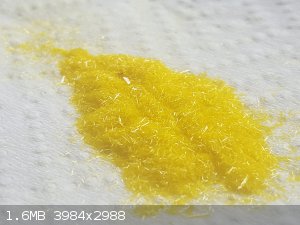 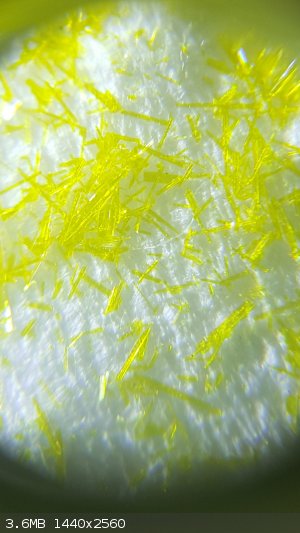 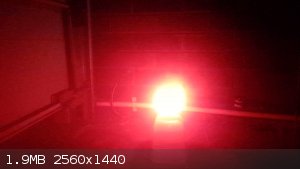
[Edited on 15-7-2017 by greenlight]
[Edited on 15-7-2017 by greenlight]
[Edited on 15-7-2017 by greenlight]
[Edited on 15-7-2017 by greenlight]
Be good, otherwise be good at it 
|
|
|
Laboratory of Liptakov
International Hazard
    
Posts: 1386
Registered: 2-9-2014
Location: Technion Haifa
Member Is Offline
Mood: old jew
|
|
Beautiful. In foil exploded ? That's a good message.... ........LL ........LL
Development of primarily - secondary substances CHP (2015) Lithex (2022) Brightelite (2023) Nitrocelite and KC primer (2024)
|
|
|
symboom
International Hazard
    
Posts: 1143
Registered: 11-11-2010
Location: Wrongplanet
Member Is Offline
Mood: Doing science while it is still legal since 2010
|
|
I want to add a couple more energetic complex salts
Perticularly
Diamine zinc perchlorate
They dissolve in alcohol. Salvadori has obtained the hydrates Zn(ClO4)2.6H2O and Zn(ClO4)2.4H2O, and the compound Zn(ClO4)2. 4NH4. Both hydrates are
strongly hygroscopic, and decompose on heating before all water is eliminated. The ammonia compound is not very stable.
Diamine zinc iodate
3Zn(IO3)2. 8NH4, are obtained by dissolving zinc iodate in concentrated ammonia solution, and either adding alcohol or allowing the solution to
evaporate spontaneously. Another compound with ammonia, insoluble in water and stable in air, has been obtained by slow evaporation of an ammoniacal
solution of zinc iodate. It decomposes explosively at 150° C. Dry powdered zinc iodate absorbs ammonia gas to form Zn(IO3)2.4NH4.
Less stable diamine zinc bromate
Deliquescent, unstable crystals of Zn(BrO3)2. 3H2O.2NH4 were obtained by adding ammonia to a solution of the salt. Zinc bromate is soluble in its own
weight of water at 15° C.
Zinc hexamethylenetetramine (hexamine)nitrite ZHN
Colourless prismatic crystals of Zn(NO2)2.2H2O.C6H12N4 are obtained by adding sodium nitrite to the solution of a zinc salt containing
hexamethylenetetramine. Zinc nitrite also occurs in the hygroscopic yellow crystalline double salt, 3KNO2.Zn(NO2)2.3H2O, obtained by acting with
nitrous acid on zinc hydroxide suspended in potassium nitrite solution, and in the similar salt, 2KNO2.Zn(NO2 )2.H2O, prepared by mixing solutions of
potassium nitrite and zinc chloride
Update sucess made ZHN its a dark yellow compound
Once sodium nitrite was added to the solution the yellow color
ZHN is insouble in water settled to the bottom it seems like a fine percipitate small bubbles are forming not sure if it is decomposing in water or
its stability
all reagents are soluble in alcohol so a reaction could take place in alcohol then precipitated slowly with water to cause bigger crystals to form
havnt done any flame tests
Excerpt from atomistry.com/zinc
This website is great shows many exotic compounds such as sodium aluminum perchlorate , sodium hypoborate, and diamine silver bromate
[Edited on 16-7-2017 by symboom]
[Edited on 16-7-2017 by symboom]
|
|
|
PHILOU Zrealone
International Hazard
    
Posts: 2893
Registered: 20-5-2002
Location: Brussel
Member Is Offline
Mood: Bis-diazo-dinitro-hydroquinonic
|
|
Quote: Originally posted by greenlight  | I was inspired by neonpulse experiment with cesium picrate on the previous page that I decided to try and make strontium picrate.
I made a thick slurry of strontium carbonate due to the insolubility problems and added it with a dropper to boiling hot picric acid solution until
neutral.
Nothing crystallised when room temperature was reached and still nothing after chilling in the freezer. Strangely, I poured the strontium picrate
solution into a fresh evaporating dish and it instantly started crystallising on the sides and was filtered soonafter.
Its looks very similar to potassium picrate with the crystals needle-like structure but slightly darker in colour (see uploaded photos).
I was unable to intiate it with shock or friction at all.
When ignited it burns similarly to potassium picrate very fast with a slight crack leaving black residue behind. It emits a deep red colour when
ignited or exploded which proves the existence of the strontium cation. When confined in foil and heated in flame it explodes with a loud report.
I will have to try the barium version.
It doesnt take fire from a fuse really at all though or only partially burns if it does.
If this was not an issue, considering the low sensitivity I think it would be a suitable more colourful replacement for the colored Mg flash
compositions for firecrackers which usually get washed out.
Photo on bottom shows about 50mg strontium picrate confined in foil and heated with a flame exploding.
[Edited on 15-7-2017 by greenlight] |
Nice...Greenlight that makes RED Lights     
Great info for picrate lovers and picrate information, thank you...
Lithium may also find uses for the red color...
You experienced the overfusion effect...the compound is into sursaturation state...and a sudden temperature change or a scratch/dust into a glas
recipient may induce fast crystalization...
Instead of carbonate you could also have used the hydroxyde....what must be slightly more soluble...but the advantage of the carbonate is that it
fizzes showing there is stil some picric acid...and the excess carbonate is easy to observe and to separate from the picrate salt.
PH Z (PHILOU Zrealone)
"Physic is all what never works; Chemistry is all what stinks and explodes!"-"Life that deadly disease, sexually transmitted."(W.Allen)
|
|
|
PHILOU Zrealone
International Hazard
    
Posts: 2893
Registered: 20-5-2002
Location: Brussel
Member Is Offline
Mood: Bis-diazo-dinitro-hydroquinonic
|
|
Quote: Originally posted by symboom  | I want to add a couple more energetic complex salts
Perticularly
Diamine zinc perchlorate
They dissolve in alcohol. Salvadori has obtained the hydrates Zn(ClO4)2.6H2O and Zn(ClO4)2.4H2O, and the compound Zn(ClO4)2. 4NH4. Both hydrates are
strongly hygroscopic, and decompose on heating before all water is eliminated. The ammonia compound is not very stable.
Diamine zinc iodate
3Zn(IO3)2. 8NH4, are obtained by dissolving zinc iodate in concentrated ammonia solution, and either adding alcohol or allowing the solution to
evaporate spontaneously. Another compound with ammonia, insoluble in water and stable in air, has been obtained by slow evaporation of an ammoniacal
solution of zinc iodate. It decomposes explosively at 150° C. Dry powdered zinc iodate absorbs ammonia gas to form Zn(IO3)2.4NH4.
Less stable diamine zinc bromate
Deliquescent, unstable crystals of Zn(BrO3)2. 3H2O.2NH4 were obtained by adding ammonia to a solution of the salt. Zinc bromate is soluble in its own
weight of water at 15° C.
Zinc hexamethylenetetramine (hexamine)nitrite ZHN
Colourless prismatic crystals of Zn(NO2)2.2H2O.C6H12N4 are obtained by adding sodium nitrite to the solution of a zinc salt containing
hexamethylenetetramine. Zinc nitrite also occurs in the hygroscopic yellow crystalline double salt, 3KNO2.Zn(NO2)2.3H2O, obtained by acting with
nitrous acid on zinc hydroxide suspended in potassium nitrite solution, and in the similar salt, 2KNO2.Zn(NO2 )2.H2O, prepared by mixing solutions of
potassium nitrite and zinc chloride
Update sucess made ZHN its a dark yellow compound
Once sodium nitrite was added to the solution the yellow color
ZHN is insouble in water settled to the bottom it seems like a fine percipitate small bubbles are forming not sure if it is decomposing in water or
its stability
all reagents are soluble in alcohol so a reaction could take place in alcohol then precipitated slowly with water to cause bigger crystals to form
havnt done any flame tests
Excerpt from atomistry.com/zinc
This website is great shows many exotic compounds such as sodium aluminum perchlorate , sodium hypoborate, and diamine silver bromate
[Edited on 16-7-2017 by symboom]
[Edited on 16-7-2017 by symboom] |
Thank you for the informations....
PH Z (PHILOU Zrealone)
"Physic is all what never works; Chemistry is all what stinks and explodes!"-"Life that deadly disease, sexually transmitted."(W.Allen)
|
|
|
greenlight
National Hazard
   
Posts: 737
Registered: 3-11-2014
Member Is Offline
Mood: Energetic
|
|
Barium picrate
Thanks LL and Philou
[/rquote]
Nice...Greenlight that makes RED Lights     
[/rquote]
Here I will try make the green light haha 
I used the same synthesis method as for the strontium picrate and the same overfusion effect happened when I crystallised it.
The crystals are much finer smaller needles than the Sr salt and leave the same black soot behind after being burnt which seems to be common for
picrates.
It is insensitive to friction and shock the same as the strontium picrate.
Although the green colour is not as strong as the Sr picrate it makes up for it in power and brisance when confined.
Unlike the strontium picrate, the top crystals of a small pile first melt and then initiate the whole pile with a loud whooomp when ignited with a
flame.
It cannot be initiated without first going through a melt-phase of the surface.
It takes longer to explode when confined in foil because of this as well.
The report is louder than Sr and the foil is reduced to smaller pieces even under slight confinement by making a small Al foil cup it explodes loudly
blowing a hole in the bottom and unravelling the whole top.
The amounts used were the same as the tests with Sr picrate.
The left picture is confinement in foil under the same conditions as the Sr salt and the right picture is burning of an small unconfined pile
[Edited on 18-7-2017 by greenlight]
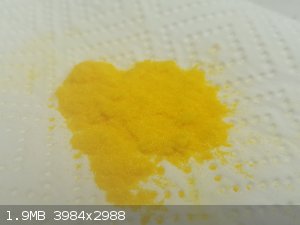 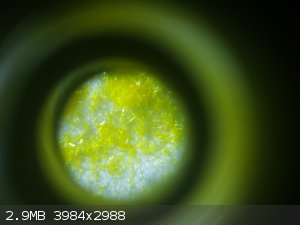 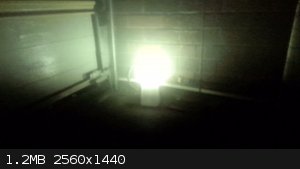 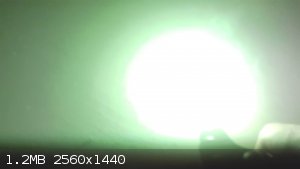
[Edited on 18-7-2017 by greenlight]
[Edited on 18-7-2017 by greenlight]
Be good, otherwise be good at it 
|
|
|
symboom
International Hazard
    
Posts: 1143
Registered: 11-11-2010
Location: Wrongplanet
Member Is Offline
Mood: Doing science while it is still legal since 2010
|
|
Exotic silver amine complexes
Exotic silver complexes
Diamine silver nitrite
Silver nitrate to sodium nitrite form Silver nitrite
Double compounds with ammonia of the formula
AgNO2,NH3; AgNO2,2NH3; and AgN
Diamine silver bromate
Potassium bromate precipitates silver bromate from Silver nitrate.Its solution in ammonium hydroxide yields crystals of the formula Ag(NH3)2BrO3.
Diamine Silver chlorate
The Silver chlorate, AgClO3, can be prepared by dissolving the monoxide in chloric acid, or by passing chlorine through a suspension of the monoxide
in water, the hypochlorite being an intermediate product.produces shock-sensitive dark crystals. A use for silver oxide batteries unfortunatly the
silver oxide is very stubborn to desolve in chlorine water due to calcination.
Its solution in ammonium hydroxide yields prismatic crystals, Ag(NH3)2ClO3, melting at 100° C.
And mercury
Trimercury chlorate acetylide
Mercuric nitrate; sodium chlorate; acetylene or calcium carbide
And copper
Tetraaminecopper chlorate
ammonium hydroxide, copper sulfate, sodium chlorate, alcohol
Exotic amine nickel
Nickel Bromate, Ni(BrO3)2.6H2O, may be prepared by double decomposition of barium bromate and nickel sulphate solutions. It crystallises in unstable
octahedra which are green in colour. From its solution in aqueous ammonia, alcohol precipitates the diammoniate, Ni(BrO3)2.2NH3.
Popular hexamine nickel perchlorate
If a piece of blotting or filter paper is moistened with a solution of nickel perchlorate and introduced into the tip of a Bunsen flame, a series of
small detonations ensues.
the hexammoniate, Ni(ClO4)2.6NH3.
Also never understood the zinc amine complexes are never very stable and decompose such as the diamone zinc permangante and diamine zinc perchlorate
Too bad alumunum chlorate doesnt form a complex but aluminum perchlorate does form a double salt
Aluminium perchlorate, Al(ClO4)3.6H2O, is a colourless, crystalline salt, soluble in water. Its aqueous solution gives, with sodium perchlorate, a
crystalline precipitate of aluminium sodium perchlorate, AlNa(ClO4)4.12H2
Info on the chlorate
Kind of off topic but it does produce chlorine dioxide
Aluminium chlorate, Al(ClO3)3.9H2O, prepared by mixing aluminium sulphate and barium chlorate, removing the barium sulphate, and evaporating the cold
solution over sulphuric acid, is very soluble in water. From a hot solution it separates as the hexahydrate. The salt is easily decomposed by heat,
and explodes when slowly heated.
Im guessing due to chlorine dioxide gas being produced
[Edited on 21-7-2017 by symboom]
|
|
|
symboom
International Hazard
    
Posts: 1143
Registered: 11-11-2010
Location: Wrongplanet
Member Is Offline
Mood: Doing science while it is still legal since 2010
|
|
Persulfates of Divalent Metals.
From google books
From this apparently pyridine and hexamine (Hexamethylenetetrammine) can form complexes with persulfates also makes me think of other combinations
with pyridine perchlorate or chlorate I have been trying to form stable chlorate complexes no luck oh well so heres a list of persulfate complexes
Crystaline persulfates of the divalent metals are difficult to obtain because of their great solubility and instability.
Tetrammine-zinc persulfate,
large transparent prisms, precipitates only from very concentrated solutions formed by double decomposition between a concentrated solution of
ammonium persulfate and a concentrated NH3 solution of the metal sulfate the corresponding NH3 compound separates as a crystaline percipitate
Hexammine-cadmium persulfate, CdS208.6NH3, forms white microscopic crystals, less soluble than the zinc analog Strong NH3 odor, decomposes on standing
in moist atmosphere
Hexammine-nickel persulfate, NiS208.6NH3, clear blue-violet crystals, strong NH, odor. Becomes black in moist air; H20 soln. is blue, turns cloudy,
percipitates NiO When dried over CaCl, it turns gray, then green, with loss of ammonia and oxygen and forms a double sulfate. In vacuum over H2SO4 it
turns dirty yellow.
Tetrammine-copper persulfate dark blue-violet needles, more stable than the precededing. All the above compoinds luae ammonia and oxygen on standing
some time, and explode when strongly heated or when struck.
---------------------------------------
By replacing amine with pyridine one obtains stable compounds
The Pyridine compounds are similarly prepared using 8-10 mol. Pyridine to 1 mol. metal sulfate.
Tetrapyridine-zinc persulfate glittering prisms, forms slowly from very concentrated solution Decomp. readily, turning yellow.
Tetrapyridine-cadmium persulfate, sharp glittering needles, less soluble than the Zn salt.
Tetrapyridine-nickel persulfate, thin, clear, blue microscopic needles, forms only from very concentrated solution
Tetrapyridine-copper persulfate, masses of blueviolet microscopic needles, insoluble in presence of excess Pyridine and ammonium persulfate
------------------------------------
Hexamethylenetetrammine compds. were similarly prepd., using 2 mol. Hexamethylenetetrammine to 1 mol. metal sulfate. The compounds obtained should be
quickly separated. and washed with ethanol since they decompose rapidly when moist but are more stable when dry.
BisHexamethylenetetramine-magnesium persulfate-octahydrate forms colorless silky scales.
BisHexamethylenetetramine-manganese persulfate-octahydrate - colorless scales.
BisHexamethylenetetramine-cobalt persulfate-octahydrate rose-colored scales.
BisHexamethylenetetramine-nickel persulfate-octahydrate, green scales.
The above 4 compounds are all isomorphous.
[Edited on 23-7-2017 by symboom]
|
|
|
Peter Lustig
Harmless

Posts: 7
Registered: 29-9-2016
Member Is Offline
Mood: No Mood
|
|
I have noticed that SADS is not stabel in contact with NHN ! After 3/4 year it beckame black and lost its effect. I guessit is reducing by hydrazin...
|
|
|
PHILOU Zrealone
International Hazard
    
Posts: 2893
Registered: 20-5-2002
Location: Brussel
Member Is Offline
Mood: Bis-diazo-dinitro-hydroquinonic
|
|
Quote: Originally posted by Peter Lustig  | | I have noticed that SADS is not stabel in contact with NHN ! After 3/4 year it beckame black and lost its effect. I guessit is reducing by hydrazin...
|
I have no such troubles with it...
==> May be due to some traces of exces free hydrazine into the NiHN ...
==> Or to unstable SADS (traces of Cl(-), of OH(-), exposure to light, uncomplete washing with demi-water)...
Was your SADS white/ cream colored, wel dried and washed with demineralized water several times?
Was it (the SADS alone thus) stable upon storage into the very same conditions?
[Edited on 21-9-2017 by PHILOU Zrealone]
PH Z (PHILOU Zrealone)
"Physic is all what never works; Chemistry is all what stinks and explodes!"-"Life that deadly disease, sexually transmitted."(W.Allen)
|
|
|
dave321
Harmless

Posts: 45
Registered: 22-11-2012
Member Is Offline
Mood: No Mood
|
|
maybe it is simply the sads changing colour due to light exposure
|
|
|
specialactivitieSK
Hazard to Self
 
Posts: 94
Registered: 21-10-2014
Member Is Offline
Mood: No Mood
|
|
Experimented someone with BISMUTH ?
|
|
|
symboom
International Hazard
    
Posts: 1143
Registered: 11-11-2010
Location: Wrongplanet
Member Is Offline
Mood: Doing science while it is still legal since 2010
|
|
Complex salts list
Hexamine nickel perchlorate
Silver chlorate
Aluminum chlorate
Copper hexamethylamine perchlorate
Tetramine copper persulfate
Diamine silver nitrite
Diamine silver bromate
Trimercury chlorate acetylide
Tetramine copper chlorate
Tetramine zinc chlorate
Tetramine zinc persulfate
Tetramine Lead nitrite
Diamine zinc permanganate
|
|
|
snooby
Hazard to Self
 
Posts: 88
Registered: 24-5-2013
Member Is Offline
Mood: No Mood
|
|
I came by this two documents about NiCP. Sensitivity looks promising. Furthermore easy synthesis, except for carbohydrazide (relatively non toxic
btw). But this compound can be bought quite easy. Nickelperchlorate should be doable also I guess.
I was looking on BNCP (its quite difficult to get it properly working in a det ( but sometimes it works however, but not really reliable, about
50/50). But it is really not sensitive towards beatings with hammer, about same as ETN. So thats really good. But in anoher patent wich i cannot find
anymore
- I mean fuck yeah found it:
http://www.niscair.res.in/sciencecommunication/ResearchJourn...
https://www.sciencedirect.com/science/article/pii/S030438940...
http://www.allindianpatents.com/patents/253659-process-for-p...
So, what you guys think bout this? Im only confused because why bothering the BNCP synthesis that takes agesi
In the end, while probably NiCP alone can also initiate tetryl, and prob also Petn/ETN and RDX maybe to.
So yeah thats why i start asking bout the NiCLO4. I am really hoping to hear some thoughts from u all. Bye
[Edited on 23-1-2019 by snooby]
|
|
|
Laboratory of Liptakov
International Hazard
    
Posts: 1386
Registered: 2-9-2014
Location: Technion Haifa
Member Is Offline
Mood: old jew
|
|
CHP
Safe initiation with perchlorate salt has been resolved before 4 years. Tetraamine copper perchlorate pure, or + 6% hexamine. Thus CHP. (copper
hexamine perchlorate) Which is much better.
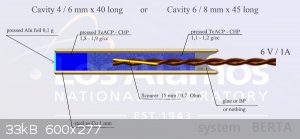
Works even in cavity 4 mm only.....Of course, that you can deploy for example booster from 500mg ETN......
Development of primarily - secondary substances CHP (2015) Lithex (2022) Brightelite (2023) Nitrocelite and KC primer (2024)
|
|
|
snooby
Hazard to Self
 
Posts: 88
Registered: 24-5-2013
Member Is Offline
Mood: No Mood
|
|
NiCP tested. Fucking sensitive, not usefull as a primary. This is confirmed by another member btw. Also the cobaltversion, dont waste any money it..
I also worked two whole days to make:
Di-Silver Aminotetrazole Perchlorate. Synthesis should not be difficult: just react silverperchlorate (tricky and a lot of work to make though) with
5-ATZ monohydrate. I got a nice clean white precipiate that wont dissolve in wother, washed it 10.00 times. Only one time it managed me to make a
product that actually detonated by flame instantly, and loud. I tried 4 more times, and now I am done with it, my whole house turned black and
messy. 
[Edited on 6-4-2019 by snooby]
|
|
|
Laboratory of Liptakov
International Hazard
    
Posts: 1386
Registered: 2-9-2014
Location: Technion Haifa
Member Is Offline
Mood: old jew
|
|
Haha...Di- silver ATZ -perchlorate ?  .....Only from the formula are my hair
from fear up!...(or out) ... .....Only from the formula are my hair
from fear up!...(or out) ... .......LL .......LL
Development of primarily - secondary substances CHP (2015) Lithex (2022) Brightelite (2023) Nitrocelite and KC primer (2024)
|
|
|
snooby
Hazard to Self
 
Posts: 88
Registered: 24-5-2013
Member Is Offline
Mood: No Mood
|
|
It was not so sensitive to impact. Much less then LA or double.salts or whatsover. It looked really promissing, but I havent made up why it just
worked once. The silver perchlorate was nice and clean. Now my product each time looks like chalk. And they burn and fizzle a lil bit but not much.
Silver perchlorate is makeble: react agno3 with sodium carbonate. Use a lot of water. Excess Yellow silvercarbonate react with HCLO4. Filter of excess
carbonate and evaporate. Hope someone will give it a shit too!
Lol give it a shot too.
[Edited on 6-4-2019 by snooby]
[Edited on 6-4-2019 by snooby]
Attachment: 20190406_184139_1.mp4 (5.6MB)
This file has been downloaded 1016 times
|
|
|
Laboratory of Liptakov
International Hazard
    
Posts: 1386
Registered: 2-9-2014
Location: Technion Haifa
Member Is Offline
Mood: old jew
|
|
Nice sharp blow. The mad formula. Great work, Snooby.... ....LL ....LL
The spoon got a pretty blow....(muhaha)
Development of primarily - secondary substances CHP (2015) Lithex (2022) Brightelite (2023) Nitrocelite and KC primer (2024)
|
|
|
snooby
Hazard to Self
 
Posts: 88
Registered: 24-5-2013
Member Is Offline
Mood: No Mood
|
|
Another one: double salt of am guanidine bicarbonate and nickelperchlorate. Very easy to make, just boil components and filter of crystals.
Sensitivity tests has yet to come though! Sorry for doublr post. In confinement this stuff detonates.
Attachment: videocompress-045-20190423_211507.mp4 (3.4MB)
This file has been downloaded 796 times
|
|
|
Tyneman
Harmless

Posts: 17
Registered: 27-3-2019
Member Is Offline
|
|
aminoguanidine ligands
Inspired by Snooby and Mineman I decided to try my hand at some amino guanidine ligands. Namely the copper and nickel variants. To show you a bit of
my journey here's the synthesis and sensitivity tests for Cu (II) (Monoaminoguanide) diperchlorate.
http://pyrobin.com/files/Cu-gua-perc%20lq.mp4
Nickel took some more work. I will follow-up when that report is finished.
|
|
|
Laboratory of Liptakov
International Hazard
    
Posts: 1386
Registered: 2-9-2014
Location: Technion Haifa
Member Is Offline
Mood: old jew
|
|
@Tyneman.....One from best video editing and quality and full info in 2 minute..... ..... Thanks for sharing..... ..... Thanks for sharing..... ..... We all thanks for perfect work. ..... We all thanks for perfect work.
I estimate, the reaction runned by lab. temperature? Only on table ?
It has very similar properties as CHP. I see low friction sensitivity and suoer speed of burn. Hammer test show also almost same power. Very good
material. Is it neutral salt? Because CHP is alkaline = disadvantage in some mixtures CHP/xy ...LL
Development of primarily - secondary substances CHP (2015) Lithex (2022) Brightelite (2023) Nitrocelite and KC primer (2024)
|
|
|
Tyneman
Harmless

Posts: 17
Registered: 27-3-2019
Member Is Offline
|
|
@LL.. Thank you for your kind words.
As stated in video synthesis was ran @ room temperature, around 20C. This resulted in a steady foaming and good rate of reaction. So there was no need
for heating.
First I ran it on the table, when more precipitate was formed I used a magnetic stirrer without heating applied.
I believe it is a neutral salt, but with these ligands and other big molecules I find it hard to know for sure. I hope someone who is more chemically
educated can answer this one.
|
|
|
| Pages:
1
..
17
18
19
20
21
..
27 |